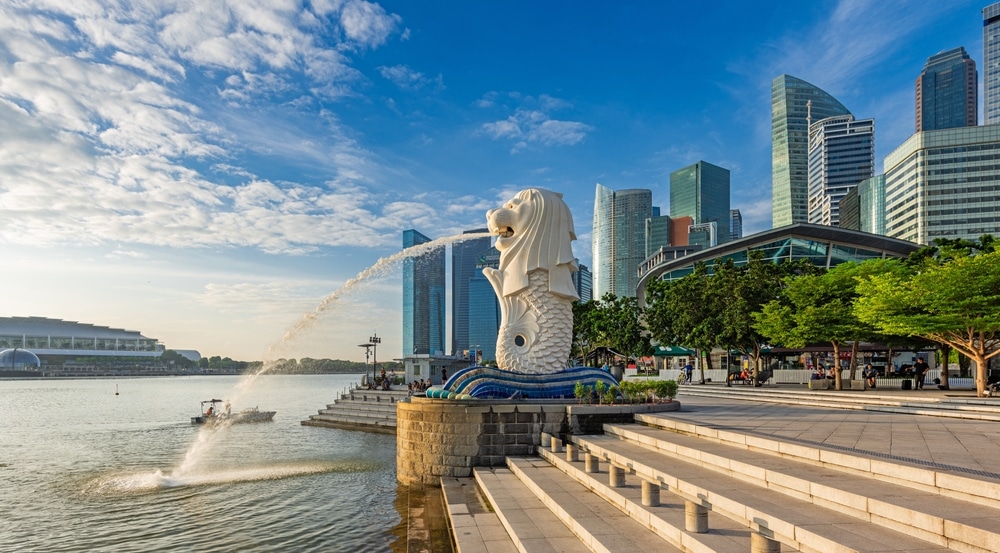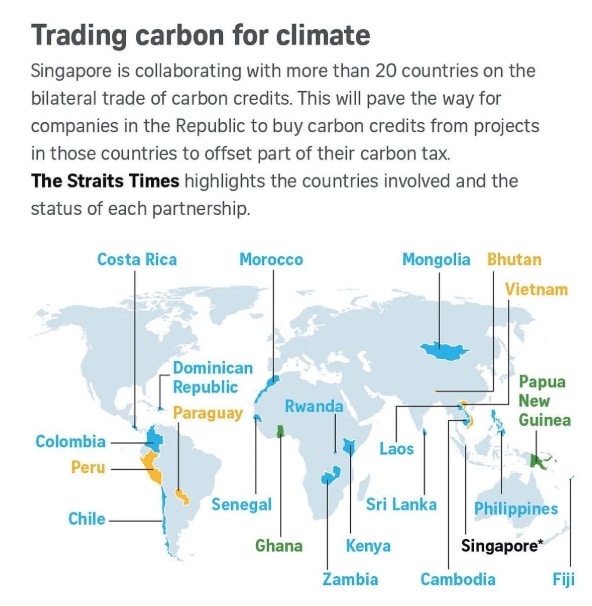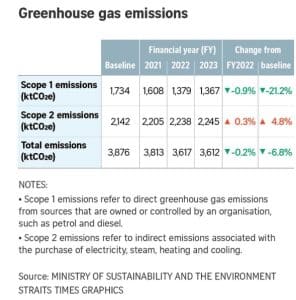Singapore’s Ministry of Trade and Industry (MTI) announced on Nov. 21, during the COP29 climate summit in Azerbaijan, that it has substantively concluded negotiations on a bilateral carbon trading agreement with Peru. The Implementation Agreement (IA), aligned with Article 6 of the Paris Agreement will allow Singapore to purchase carbon credits from Peru.
Singapore’s Minister for Sustainability and the Environment and Minister-in-charge of Trade Relations, Ms Grace Fu, said,
“The successful conclusion of substantive negotiations on the Implementation Agreement with Peru marks a significant milestone in our collective efforts to combat climate change and achieve our climate targets through cooperation. We thank our Peruvian counterparts for their partnership to advance global climate action. When the agreement is signed, we look forward to the private sector utilizing this agreement to develop carbon credits projects to actualize concrete environmental outcomes.”
Carbon Credits Cooperation: Unlocking the Implementation Agreement
This partnership builds on a 2022 memorandum of understanding (MOU) between the two countries, which laid the foundation for bilateral cooperation in carbon markets.
The next step involves formalizing the agreement through an implementation signing. The key highlights of the collaboration and the agreement include the following:
- The collaboration aims to boost mitigation efforts and scale effective climate solutions, helping both countries advance their climate goals.
- The agreement also creates a framework for generating and transferring Article 6-compliant carbon credits internationally.
- It defines clear criteria and processes for developing carbon credit projects. It also outlines how credits will be transferred between Singapore and Peru.
- The agreement outlines steps to ensure independent and robust accounting and eliminate double counting of carbon credits.
Once completed, Singaporean companies liable for carbon taxes can purchase credits from Peru to offset up to 5% of their taxable emissions. This marks a significant step in Singapore’s efforts to explore alternative pathways to reduce its carbon footprint.
- RELATED: Article 6.2 at COP29: Singapore Partners with Gold Standard and Verra to Advance Climate Action
COP29 Spotlight: Singapore Expands Carbon Market Ties
Singapore has been active in advancing carbon credit initiatives at COP29 and achieved some important milestones in this space. On Nov. 18, the Singapore Sustainable Finance Association signed a pact with five major carbon market associations representing Malaysia, Indonesia, Singapore, Thailand, and ASEAN to create a unified ASEAN Common Carbon Framework. This collaboration aims to reduce implementation costs and unlock regional carbon project opportunities.
Recently, Singapore and Zambia signed a similar Memorandum of Understanding (MOU) to collaborate on carbon credits aligned with Article 6 of the Paris Agreement at the COP29 summit. This was announced on November 19. The MOU enables both countries to share best practices and knowledge on carbon credit mechanisms. It also helps identify carbon credit projects that benefit both nations and support their climate goals.
Source: The Straits Times
Singapore has already signed implementation agreements with Papua New Guinea and Ghana, although trading under these agreements has not started.
The country is actively engaging with over 20 countries on carbon markets, most of which remain in the MOU phase. MTI revealed that the country has signed similar agreements with Cambodia, Chile, Fiji, Kenya, Lao PDR, Mongolia, Peru, Rwanda, Senegal, Sri Lanka, and the Philippines.
Peru now joins Bhutan, Vietnam, and Paraguay as countries that have reached the advanced stage of finalizing crucial issues on carbon trading with Singapore.
A Win-Win for Sustainability and Development
Singapore faces significant challenges in decarbonizing due to its lack of alternative energy resources Therefore, buying carbon credits seems like the most viable solution. Thus, the country can mitigate carbon emissions by funding projects with the parenting county.
For Peru, this agreement provides access to international carbon markets, bringing investments into sustainable projects such as reforestation. Such projects not only address environmental goals but also promote local development, create green jobs, and foster innovation.
Peru’s Deputy Minister of Strategic Development of Natural Resources of the Ministry of Environment, Ms Raquel Soto, said,
“The Implementation Agreement with Singapore brings significant benefits for Peru, enhancing our ability to address climate change while driving sustainable development. Through this agreement, we can access international carbon markets to channel investments into high-quality mitigation projects that support our environmental and economic goals. It reinforces Peru’s leadership in leveraging Article 6 mechanisms of the Paris Agreement to promote innovation, create local green jobs, and achieve our climate commitments in a transparent and effective manner. This partnership with Singapore underscores the power of international cooperation in building a more sustainable future.”
MTI emphasized Singapore’s commitment to upholding transparency, quality, and accountability in carbon markets. With these growing partnerships, the Southeast Asian nation can eventually be a leader in global carbon markets and trade carbon credits effectively. Last but not least, the country is leveraging international cooperation to address its sustainability challenges while supporting global climate goals.
Sources:
- FURTHER READING: Sylvera and Singapore Forge Path Towards High-Quality Carbon Credits




